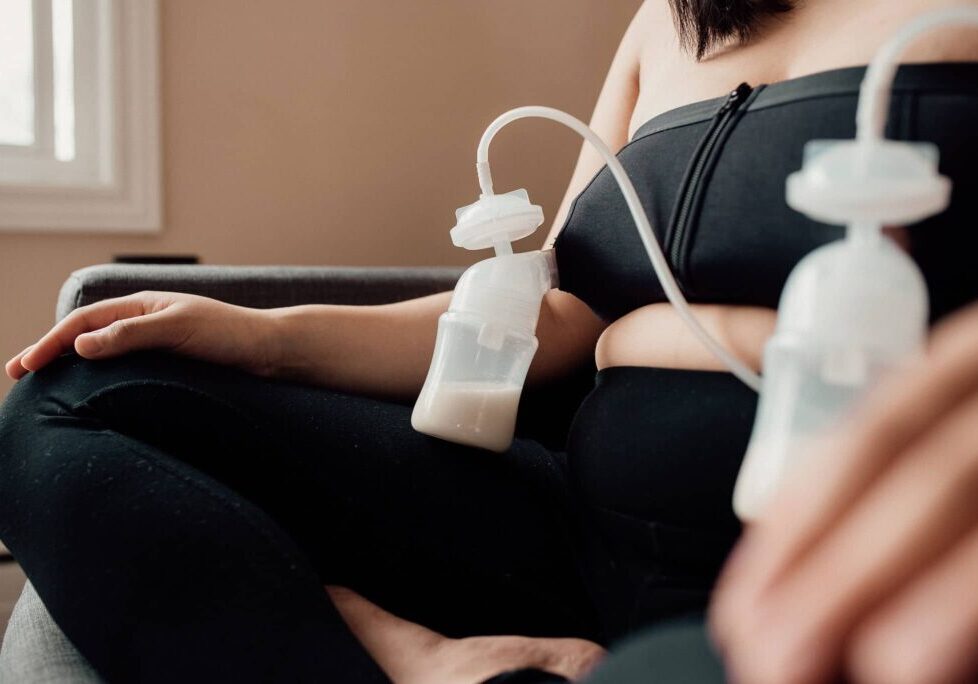
When and How to Start Pumping
Learn when and how to start pumping to build a milk supply, return to work, or share feeding duties while supporting your breastfeeding journey.
Bringing home a new baby is full of changes, feeding being one of the biggest adjustments. For many parents, breastfeeding is a rewarding experience, but it also comes with questions. One of the most common is: When and how should I start pumping?
Whether you want to build a freezer stash, prepare to return to work, or simply give yourself flexibility, pumping can be a helpful part of your feeding plan. In this guide, we’ll cover when to start pumping, how to do it effectively, and practical tips for making it work for your family.
Why Pumping Can Be Helpful
Pumping isn’t always necessary, but for many families, it offers freedom and reassurance. Here are a few reasons parents choose to pump:
- Returning to work: Pumping helps maintain your milk supply when you’re away from your baby.
- Sharing feeding duties: A partner or caregiver can bottle-feed, giving you time to rest.
- Building a freezer stash: Having milk on hand is convenient for busy or unexpected days.
- Managing supply issues: Pumping can increase supply or help relieve engorgement.
- Exclusive pumping: Some parents choose this method if breastfeeding at the breast isn’t possible.
Knowing your reason for pumping can help guide when and how to start.
When to Start Pumping
There’s no one-size-fits-all answer, but here are common scenarios:
1. The First Few Weeks
Most lactation experts recommend waiting until breastfeeding is established, usually around 4–6 weeks postpartum, before adding regular pumping sessions. This gives your body time to regulate supply and helps your baby learn to latch effectively.
2. If You’re Returning to Work
If you plan to return to work, start pumping about two weeks beforehand. This allows time to build a small freezer stash and practice with bottles, without overwhelming your schedule.
3. If You Need to Boost Supply
Some parents begin earlier if there are supply concerns. In these cases, pumping can help stimulate milk production under the guidance of a lactation consultant.
4. Exclusive Pumping Situations
If your baby cannot latch or you’ve chosen exclusive pumping, you’ll begin pumping soon after birth—about every 2–3 hours, similar to a newborn’s feeding schedule.
How to Start Pumping
Once you’re ready, here’s how to get started:
Choose the Right Pump
Pumps come in several forms:
- Manual pumps: Affordable and portable, good for occasional use.
- Single electric pumps: More efficient than manual, but still best for light use.
- Double electric pumps: Great for frequent pumping or working parents.
- Hospital-grade pumps: Most powerful option, often rented for supply concerns or exclusive pumping.
Think about your lifestyle and how often you’ll need to pump before choosing.
Time Your Sessions Well
For parents adding pumping on top of breastfeeding, the best time is often:
- In the morning, when milk supply tends to be higher.
- About an hour after the first feed of the day.
- After your baby has gone longer between feeds, such as during a nap.
Aim for consistency, but don’t stress if every day looks different.
Start Slow
Begin with one pumping session per day. This helps your body adjust without creating oversupply, which can cause discomfort.
Learn Proper Technique
Check that your flanges fit correctly, as poor fit can lead to pain and reduced milk output. Relaxation techniques, like deep breathing or looking at photos of your baby, can also help with letdown.
Store Milk Safely
Freshly pumped milk can be stored:
- At room temperature for up to 4 hours.
- In the refrigerator for up to 4 days.
- In the freezer for 6–12 months (best within 6 months).
Label bottles or bags with the date, and use the oldest milk first.
Tips for Making Pumping Easier
Pumping can feel like a big commitment, but these strategies help:
- Create a pumping space: Set up a comfortable chair, water, snacks, and entertainment.
- Use hands-free bras: These free up your hands and make multitasking possible.
- Stay hydrated and nourished: Fluids and balanced meals support milk production.
- Be patient: It can take time for your body to respond well to the pump.
- Don’t compare: Every parent’s pumping output is different, and that’s normal.
Balancing Pumping and Daily Life
It’s easy to feel tied down by pumping. To keep it manageable:
- Batch tasks: Wash parts once a day by storing used pump pieces in the fridge between sessions.
- Communicate with your partner: Share responsibilities like cleaning bottles or labeling milk.
- Ask for help: Doulas, lactation consultants, and support groups can guide you through challenges.
Common Pumping Questions
How long should I pump?
Usually 15–20 minutes per session, or until your milk flow slows down.
How much milk should I expect?
Output varies. In the beginning, even an ounce or two is normal. Over time, supply tends to increase.
What if pumping hurts?
Pumping should not be painful. Check flange size, suction settings, and lubrication to prevent discomfort.
Can I combine milk from different sessions?
Yes, but only after cooling fresh milk to the same temperature as stored milk before mixing.
When to Reach Out for Support
If you’re struggling with low supply, pain, or confusion about schedules, a lactation consultant or postpartum doula can help. Professional support can make the experience smoother, less stressful, and more successful.
Final Thoughts
Deciding when and how to start pumping depends on your goals, your baby’s needs, and your lifestyle. Some families begin within days, while others wait weeks. There’s no perfect timeline, only what works best for you.
Thank you for reading this week’s post, “When and How to Start Pumping” For more tips on all things pregnancy, postpartum, and parenthood visit our weekly blog.
